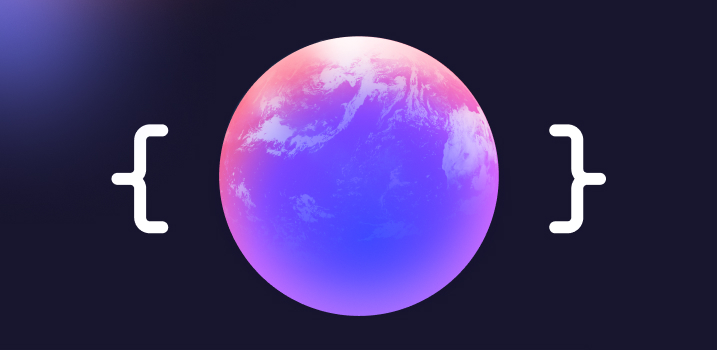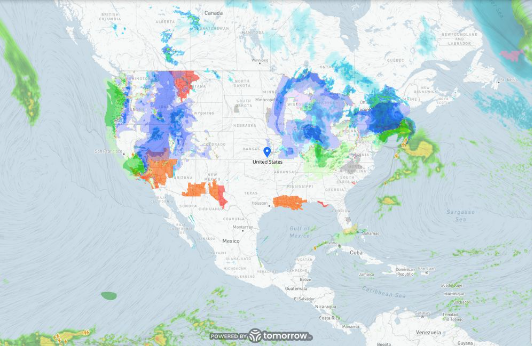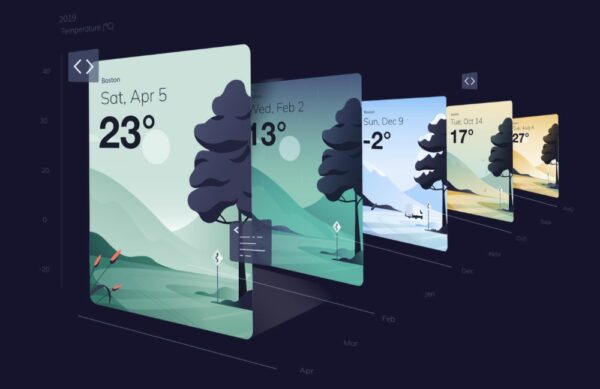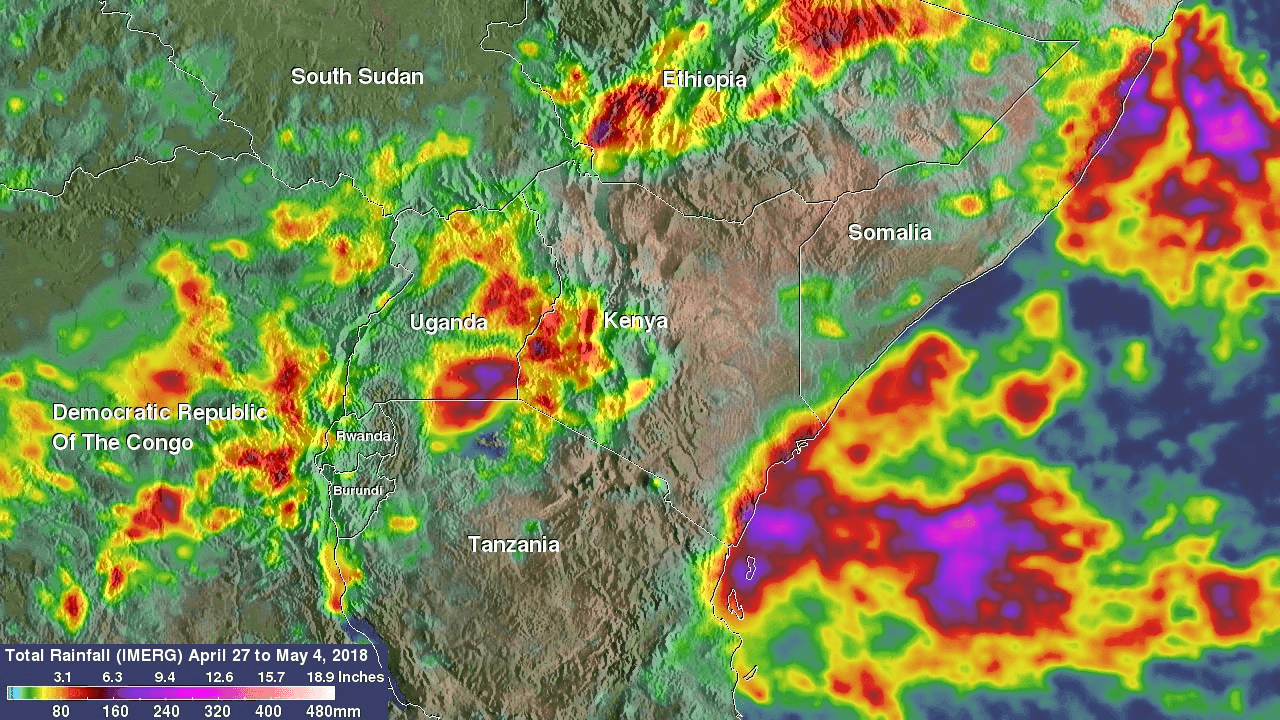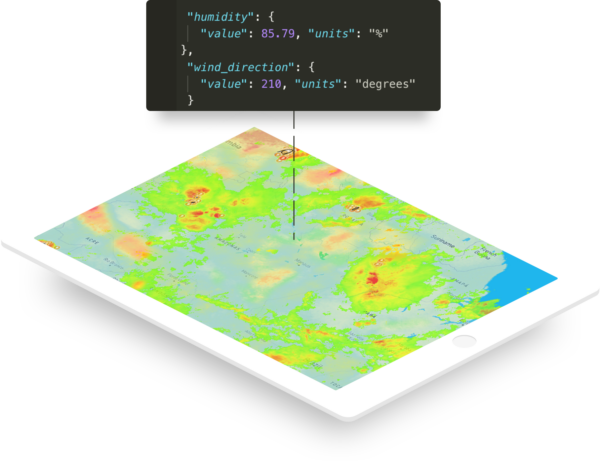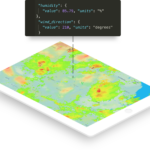TL;DR:
- Weather APIs provide developers access to current, forecasted, and historical weather data.
- The best weather APIs for 2024 are judged based on functionality & scope, compatibility & ease of implementation, responsiveness & reliability, and cost.
- The top weather APIs in 2024 include Tomorrow.io, OpenWeatherMap, MeteoGroup, Weatherstack, Weatherbit, Weather2020, AerisWeather, Accuweather, and Visual Crossing.
- The all-around best Weather API for 2024 is Tomorrow.io’s Weather API, offering 80+ data layers and a top-rated interface.
Accurate, actionable weather forecasts are vital to the success of many organizations.
In fact, there are entire industries where weather conditions directly impact day-to-day operations, including shipping, on-demand, energy, and the supply chain (to name just a few).
Take utilities, for example. According to McKinsey, a typical utility company sees up to $1.4B in storm damage costs and lost revenue due to outages from storms over a 20-year period.
With actionable weather forecasts, businesses can better prepare for weather events, save money, and improve operations all in the same process.
With the shutdown of Dark Sky Weather API, many people have sought after a better weather API for their weather data needs. But how do you know what’s the right choice for you?
North American Weather Map via Tomorrow.io Weather Intelligence Platform
Whether you’re building an app, adding weather data to your software platform, or embedding data into a home assistant, you may be looking for very different capabilities from a free weather API.
That’s where we can help!
Depending on your priorities, some APIs will be a better fit than others.
We looked at all the top weather APIs on the market in 2024 to help you choose the right one and get started faster.
Scroll down to learn what to consider when choosing the best weather API for your project or business this year.
What is a Weather API?
A weather API is an application programming interface that allows software developers to access and integrate weather data from various providers into their own applications and websites.
Weather APIs are similar to map APIs in terms of integration and versatility of data sources. Each service provider collects, aggregates, and processes meteorological and other relevant weather data then offers access to it via API.
As a developer, you likely already use APIs to perform different tasks and functions in your apps or across your site.
This data includes information such as:
- Temperature
- Humidity
- Wind Speed
- Precipitation
- Cloud cover
- Visibility
- …and more
For example, if you are building a web or mobile app that needs to pull weather forecast data, the right weather API makes this easy. With this data, you can generate updates and alerts in web and mobile apps, creating solutions uniquely suited to your needs.
From on-demand weather forecasting to planning business operations, the use cases for a weather API are immense.
How to Choose a Weather API
With the number of weather APIs out there, there are a few things to consider before making your selecting.
You should be aware that each has unique capabilities, varying costs, and different degrees of reliability. Some even target specific markets or communities with unique features for agricultural applications or air quality monitoring.
Here’s what we recommend you consider.
Functionality and Scope
While most major weather APIs provide similar core functionality, they can vary in aspects like:
- Data resolution and accuracy
- Length of historical records
- Date/time formats
Selecting an API that provides the specific weather data your app needs (e.g., marine conditions, weather on Mars) without unnecessary features is essential.
Free APIs often have limitations like:
- Number of API calls
- Functionality depth
So if building a commercial app that needs advanced weather data for a business use case, additional costs for premium APIs with more robust capabilities may be warranted.
Compatibility and Ease of Implementation
Most weather APIs today are based on RESTful architecture, with a handful offering a SOAP alternative. Be sure to pay attention to those subtle differences in date and time formats and well-tested compatibility with the app framework and language you’re coding in.
Another thing to take note of is the quality of API documentation.
While some services have in-depth tutorials and guides, others expect you to figure it out yourself or come armed with previous experience implementing weather APIs.
Depending on your level of expertise, you may want more documentation to effectively set things up.
Responsiveness and Reliability
You need a weather API to not only do what you want and well, but you want it to be fast and available. There are several sources for information on uptime and response speed of available weather APIs, but the information there is inconsistent or inaccurate.
The best way to find out which APIs are reliable and fast enough to make it into the production version of your app is to try them. Fortunately, most offer a free trial option or a freemium subscription.
Cost
Once you’ve determined the needs and scope of your project and narrowed down your list of potential weather API providers, it’s time to consider the price tag.
The features, uptime, capacity, and responsiveness offered by the free API services are inferior to those of paid options. That said, even the highest-priced APIs will become a significant expense only if and when your app’s number of API requests is exceptionally high.
Our Picks for the Best Weather APIs
Based on our research, here are the top free and paid weather APIs available in 2024 based on functionality, price, and data access:
- Tomorrow.io API
- OpenWeatherMap
- Meteogroup
- Weatherstack
- Weatherbit
- Weather2020
- AerisWeather
- Accuweather
- Visual Crossing
1. The Best Weather API for 2024: Tomorrow.io’s Weather API:
Tomorrow.io’s API offers an all-in-one endpoint with 80 different data fields, including weather, air quality, pollen, road risk, and fire index, and also includes historical, real-time, and forecast weather data, globally. A lean and flat payload creates a seamless developer experience with comprehensive documentation, cutting-edge functionality and features, including:
- Polygon/polyline locations: Location types give developers the flexibility to choose the right bounding box to continuously observe inclement weather within that specific lat/long vicinity.
- Monitoring and alerts: Customize your own rules for what weather conditions you want to be monitored in which locations, and you can receive alerts through the Tomorrow.io Weather API for when those specific thresholds have been met.
- Dynamic routes: Get any of our data fields in real-time mapped to a travel route, with granularity in the forecast every step of the way.
Tomorrow.io’s Weather API is trusted by top companies such as Microsoft, Uber, JetBlue, World Triathlon, AWS, Ford, and more.
App Integration/ Format: AWS, Autodesk, REST Weather API using JSON for the requests and the responses, with HTTPS support
2. OpenWeatherMap
OpenWeatherMap offers weather data APIs for different types of timeline data. In a solution inspired by crowdsourcing projects like Wikipedia, weather data is collected from meteorological broadcast services worldwide and over 40,000 weather stations. This freemium solution also has a feature-limited free option that allows access to the 5 days/3 hour forecast API, as well as weather alerts and a weather map.
One thing to consider is that the free account for OpenWeatherMap limits your app to 60 API calls a minute at most.
App Integration/Format: JSON / XML
Pricing: Varies. Free up to Enterprise.
3. Meteogroup
Priding themselves by specializing in UK-specific and nautical weather and environmental data, Meteogroup offers four different APIs: Nautical API (Beta), Point Forecast, Point Observations, and Radar Precipitation Forecast (Beta).
If you’re in search of weather data for nautical verticals and UK-based customers, then the MeteoGroup API could be a great fit.
App Integration/Format: JSON with HTTPS support
Pricing: Unknown
4. Weatherstack
Staying in the UK, The Weatherstack API is developed by a UK company that excels in SaaS with companies like Ipstack, Currencylayer, Invoicely, and Eversign. Aimed mostly at websites and mobile apps looking to include a live weather widget at minimal cost, offers real-time weather, historical weather, international weather, and more.
App Integration/Format: REST API returns JSON formatted responses, and supports JSONP callbacks. HTTPS is enabled for paid subscriptions.
Pricing: Varies. Free up to Enterprise.
5. Weatherbit
Weatherbit offers 5 different APIs for forecasts, historical data, and other weather data such as air quality, soil temperature, and soil moisture. Collecting data from weather stations and other traditional sources, Weatherbit uses machine learning and AI to help predict the weather.
Boasting a 95% uptime and highly responsive API servers, Weatherbit provides a free limited-functionality account for a single API key. If you’re looking to create a commercial app, note that the free API subscription will not be enough and you will have to upgrade to one of the paid plans.
App Integration/Format: JSON, HTTPS available for premium subscribers
Pricing: Premium pricing starts at $35 / month. The free version (not for use with commercial projects) is limited to 500 API calls/day.
6. Weather2020

Weather2020 brands itself as the only provider capable of delivering a 12-week forecast, so it’s great if you’re looking for long-term forecast data. However, there are some questions around the accuracy of forecasting after 10 days. The company also prides itself on being the weather data provider of leading weather apps like 1Weather.
If your focus is on long-range weather forecasting, and you’re willing to take your chances on famed meteorologist Gary Lezak’s forecasting model, Weather2020 is worth checking out.
App Integration/Format: JSON
Pricing: Premium pricing starts at $9.99 / month. The free version allows for up to 1000 API calls/day with each additional call priced at $0.002.
7. AerisWeather
AerisWeather API provides access to weather data and forecasts as well as storm reports, earthquake warnings, and other unique data for premium subscribers.
One of the main advantages of AerisWeather API is its documentation, as well as available developer toolkits for easier integration into your app.
App Integration/Format: RESTful calls and responses are formatted in JSON and JSONP
Pricing: Pricing starts at $23 / month. Free trial available (2 months).v
8. Accuweather
Accuweather is probably one of the most well-known names in weather. They offer current, historical, and international weather data, along with other specific data like mosquito activity. But when it comes to their API, they’re most well known for their imagery endpoints.
Note that while you can use this API in both commercial and non-commercial applications, including the Accuweather logo is required.
App Integration/Format: RESTful calls and responses are formatted in JSON and JSONP.
Pricing: Limited trial offers up to 50 calls per day, then three pricing tiers of $25 to $500/month
9. Visual Crossing API
Visual Crossing provides instant access to both historical weather records and weather forecast data, globally. The company aims to bring low-cost data and analysis tools to the public for use in data science, business analytics, machine learning, and other applications.
App Integration/Format: CSV, JSON, & OData
Pricing: 1000 calls per day, then $35/month.
Choosing the Best Weather API
The weather API that works best for you as a developer depends heavily on your goals, preferences, project scope, and budget. Numerous services offer data on topics ranging from air quality to earthquakes, fire risk index, and historical to forecast weather.
The services and solutions we listed cover all and any needs you might have as a developer.
Did we miss something? Reach out to let us know!
